In a world where uncertainties like nuclear fallout are a reality, knowing how to seal your house from nuclear fallout becomes crucial. Whether you’re a seasoned prepper or just beginning to explore emergency preparedness, this guide offers valuable insights.
To seal your house from nuclear fallout, identify and secure air entry points with heavy-duty plastic sheeting and duct tape, while reinforcing walls with dense materials like bricks or books. Be prepared with necessary tools and materials in advance for efficient sealing.
From choosing the right materials to practical tips for maintaining air quality, we cover everything you need to know about sealing your house from nuclear fallout. Keep reading to learn how to effectively shield your home, ensuring safety and peace of mind in uncertain times.
What is Nuclear Fallout? What Does it Contain?
Nuclear fallout, that dreaded aftermath of a nuclear explosion, is more than just a scary concept from cold war movies. It’s made up of radioactive particles that get catapulted into the atmosphere and eventually return to Earth.
Picture tiny, invisible threats, including isotopes like iodine, strontium, and cesium, known for their persistence and radioactive nature. These particles can travel far and wide, carried by the wind, making them a widespread concern. Remember, it’s not about proximity to the blast; these particles can reach you even if you’re far from ground zero.
The composition of nuclear fallout is complex. It’s not just one thing; it’s a cocktail of various radioactive elements, each with its own set of challenges. Understanding what’s in this fallout helps you prepare better and make more informed decisions about your safety.
The Health Risks of Nuclear Fallout Exposure

When you hear about nuclear fallout, your first thought might be about the immediate danger it presents. Short-term exposure can be brutal, leading to acute radiation syndrome. Symptoms like nausea, fatigue, and hair loss are just the tip of the iceberg; in severe cases, it can be life-threatening.
But that’s not all. Long-term exposure has its own set of dangers, significantly increasing your risk of developing cancers, especially thyroid cancer, due to radioactive iodine. It’s a particularly harsh reality for the most vulnerable among us – children and pregnant women.
Being aware of these health risks is not meant to scare you, but to prepare you. Knowledge is your first line of defense. By understanding what exposure to nuclear fallout can do to your body, you’re better positioned to take the necessary steps to protect yourself and your family.
Now, you might be thinking, “What can I do about all this?”
Well, preparation is key. It’s not just about building a bunker; it’s about understanding the nature of nuclear fallout and how to minimize its impact on your life.
By preparing, you’re not just safeguarding your physical health, but also equipping yourself mentally to handle such a crisis. Timely and adequate preparation can drastically reduce the dangers associated with fallout. It’s about being proactive rather than reactive.
But it’s not just about individual preparation. As part of a community, your preparedness can contribute to a larger safety net. By being prepared, you’re also helping those around you, creating a more resilient community in the face of such threats. Remember, in the event of a nuclear incident, the choices you make based on your preparedness can be a matter of life and death.
Assessing Your Home
Your home is your sanctuary, and in the event of nuclear fallout, it could also be your bomb shelter. But not all areas in your home are created equal when it comes to protection from radioactive particles. Let’s delve into how you can assess your home and make it a safer place.
Identify Suitable Shelter Areas Within Your House
Think about your house. Where would you go if you needed to protect yourself from nuclear fallout? The safest places are usually the most shielded ones, like basements or central hallways without windows. You want to create as much distance and as many barriers as possible between yourself and the outside world. This isn’t just about comfort; it’s about survival.
But it’s not just about picking a spot and calling it a day. You need to consider the materials around you. Dense materials like concrete and brick are your friends here, providing a much-needed shield against radiation. This isn’t a one-size-fits-all solution; every home is different, and your safe spot will depend on your home’s layout and construction.
Evaluate Your Home’s Structural Integrity
Now, take a good look at your home’s bones – its structure. If you’re in an older building or one with a wooden frame, you might need to think about additional protective measures. These types of structures might not offer the same level of protection as newer buildings with concrete structures. It’s about understanding what you’re working with and adapting accordingly.
But evaluating your home’s structural integrity is not just about the type of building. It’s about ensuring that your chosen shelter area within your home can withstand the added weight and stress of any additional protective materials you might add. It’s about being strategic and making the most of what you have. Remember, your home’s ability to protect you is only as strong as its weakest point.
Consider the Proximity to Potential Targets or Fallout Sources
Think about where you live in relation to potential nuclear targets. Are you near military bases, industrial complexes, or major cities? These locations could be more at risk in the event of a nuclear incident. If you’re closer to these potential targets, you might need to consider more robust protective measures. It’s not about fear; it’s about being realistic and practical.
Understanding the risks based on your location is a crucial part of your preparedness plan. It’s not the same for everyone; your needs will vary based on your proximity to potential fallout sources. This isn’t about moving to the middle of nowhere; it’s about knowing your risks and planning accordingly. Remember, the goal is to reduce your exposure to fallout, not to live in fear of it.
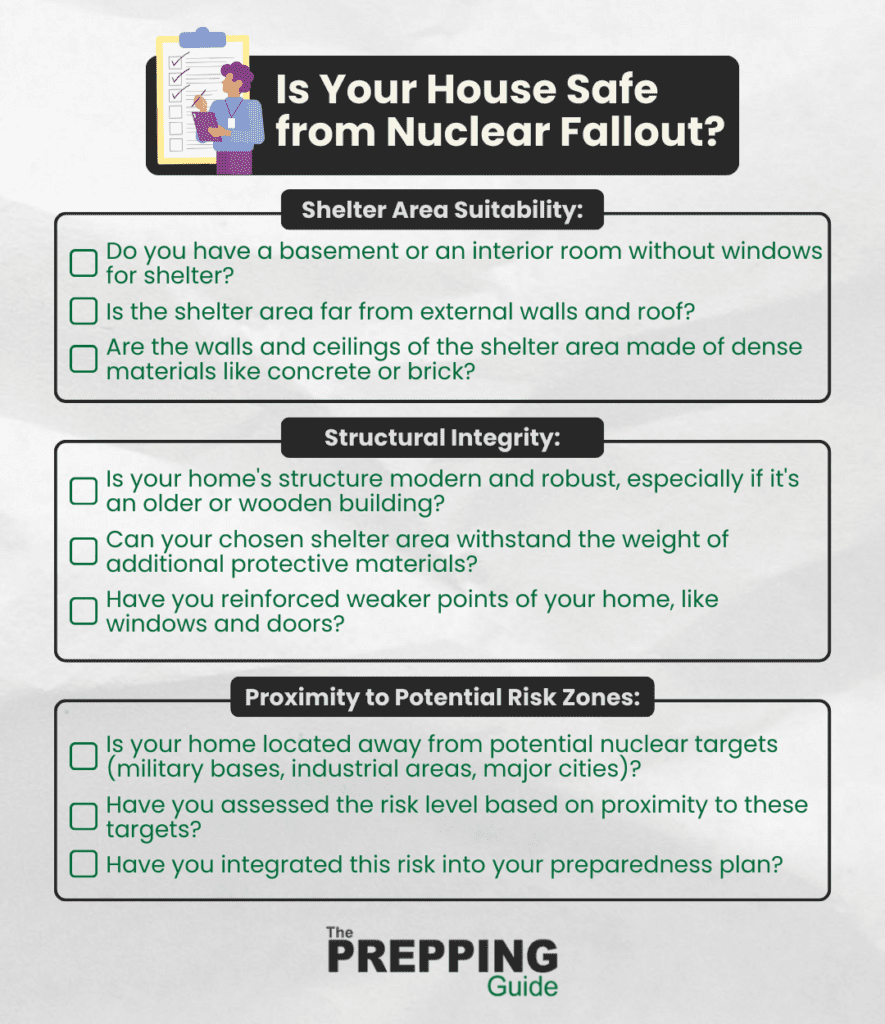
Gathering Essential Supplies
In the event of a nuclear fallout, having the right supplies on hand is not just helpful – it’s essential for survival. Gathering these supplies well in advance ensures that you’re prepared for any situation, whether you need to stay put or evacuate quickly. Let’s break down the essentials you’ll need, the importance of a well-stocked emergency kit, and tips on acquiring and storing these supplies effectively.
Create a List of Necessary Supplies
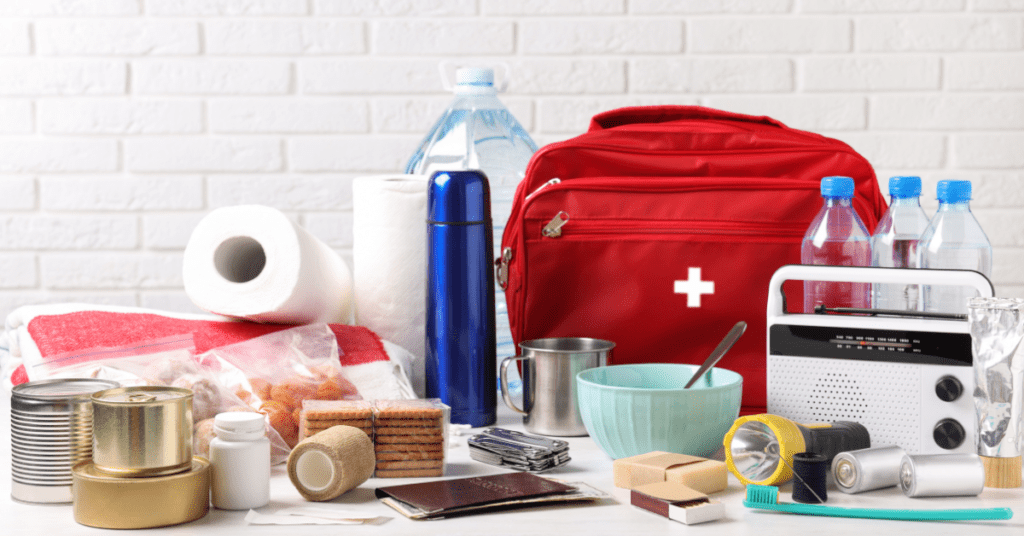
Your first step should be to create a comprehensive list of necessary supplies. This list should include non-perishable food items, water (at least one gallon per person per day), a first aid kit, essential medications, a flashlight with extra batteries, and a battery-powered or hand-crank radio. Don’t forget about sanitation and hygiene items such as toothpaste, soap, and toilet paper, as well as protective clothing and gear, like masks and gloves, to keep you safe from potential hazards.
Remember, the goal is to have enough supplies to sustain you and your family for an extended period. Non-perishable food items should be easy to prepare and consume, preferably requiring no cooking or refrigeration. Water is crucial, not just for drinking, but also for hygiene purposes. Keep in mind any special needs of family members, such as prescription medications, baby supplies, or pet care items.
The Importance of a Well-Stocked Emergency Kit
A well-stocked emergency kit can be your lifeline during a nuclear event. This kit should be comprehensive, containing all the essentials needed to sustain you and your family for at least 72 hours to two weeks. The reality of a nuclear fallout is that you might be confined to your shelter for an extended period, so having everything you need in one accessible place is crucial.
Your emergency kit should be tailored to your family’s specific needs and regularly updated. Include copies of important documents, such as identification and medical records, in case you need to evacuate. Consider the needs of all family members, including pets, and plan accordingly. A well-prepared kit not only provides for your physical needs but also offers peace of mind in a stressful situation.
How to Acquire and Store These Supplies
When acquiring your emergency supplies, start well in advance and look for items with long shelf lives. Purchase these items gradually to spread out the cost and ensure that you’re always adding the freshest products to your stockpile. Store them in an easily accessible, yet secure location within your shelter area, away from potential hazards or contamination sources.
Food and water should be stored in airtight containers to prevent contamination and extend their shelf life. Regularly check the expiration dates of your supplies and rotate them out as needed. It’s also important to consider the storage conditions; keep your supplies in a cool, dry place to prevent spoilage. By carefully selecting and maintaining your supply stockpile, you’ll ensure that you’re ready for a prolonged stay in your shelter if needed.
Sealing Your Home
When preparing for a possible nuclear fallout, one of the most critical steps is sealing your home effectively. This involves more than just closing windows and doors; it’s about creating a barrier against radioactive particles.
According to the U. S. First Responders Association on Radiation Protection:
“It is critical to seek shelter from fallout in a facility with thick shielding.”
Assessing Your Home’s Vulnerability
When preparing for a potential nuclear fallout, one of the first and most critical steps is to assess your home’s vulnerability. This process involves a detailed examination of your home’s structure and layout to identify areas that could be susceptible to radiation penetration. Understanding these vulnerabilities is key to effectively sealing your home and protecting your family.
Identifying Vulnerable Areas
When preparing for a potential nuclear fallout, one of the first and most critical steps is to assess your home’s vulnerability. This process involves a detailed examination of your home’s structure and layout to identify areas that could be susceptible to radiation penetration. Understanding these vulnerabilities is key to effectively sealing your home and protecting your family.
Below are the most vulnerable areas of a home during a nuclear attack:
Windows and Doors: These are the most obvious entry points for fallout particles. Examine all windows and doors for gaps, cracks, or weak seals where radioactive dust could enter.
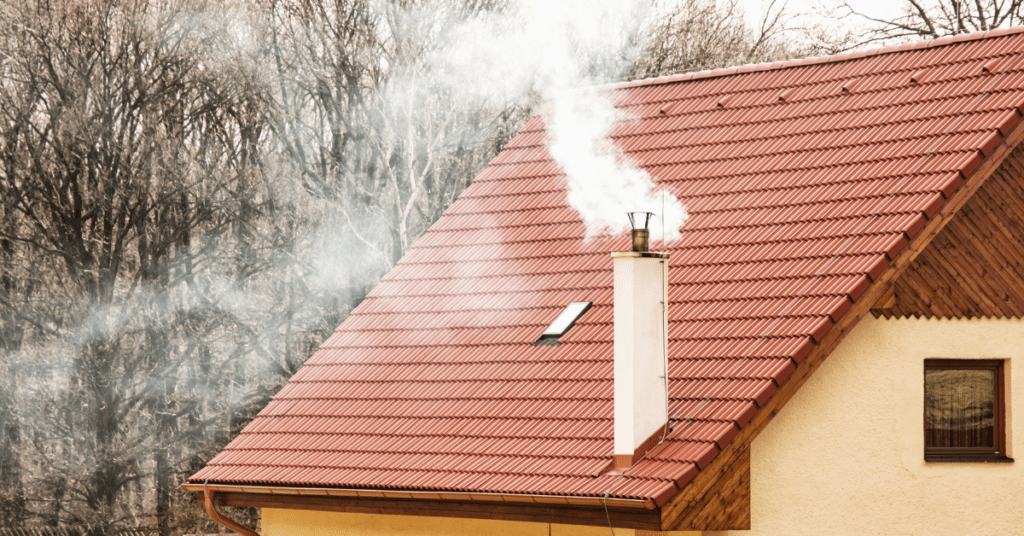
Vents and Chimneys: HVAC systems, air vents, and chimneys are designed to allow air flow, making them potential entry points for fallout. Assess these features for their ability to be sealed off in an emergency.
Basement and Foundation: Check your basement and foundation for cracks or openings. Even small fissures can be a risk for radioactive particle ingress.
Roof and Attic: Inspect your roof for any damaged tiles, gaps, or holes. The attic, especially if it has vents or is poorly sealed, can also be a risk area.
Recommended Materials and Tools for Sealing
Before you start sealing your home, it’s important to gather the right materials and tools. You’ll need:
- Heavy-duty plastic sheeting: Essential for covering windows, doors, and other openings.
- Duct tape: Used to seal the edges of the plastic sheeting and ensure an airtight barrier.
- Staple guns: Helpful for securing plastic sheeting in place.
- Nails and hammer: Necessary for additional reinforcement of the plastic sheeting.
Having these tools and materials on hand is crucial for creating an effective barrier against nuclear fallout.
Step-by-Step Guide to Sealing Your House from Nuclear Fallout
Sealing your home properly is a critical step in protecting yourself from nuclear fallout.
1. Sealing Windows and Doors: Start by sealing all windows and doors. Use duct tape and plastic sheeting to create airtight seals, ensuring that no external air can enter. This includes any minor openings or cracks that might seem insignificant but can be potential entry points for radioactive particles.
2. Blocking Ventilation Systems: It’s vital to close and seal all vents, air conditioning units, and fireplaces. These are common entry points for contaminated air. Remember, the goal is to create a sealed environment that prevents the outside air, potentially laden with fallout, from getting in.
3. Reinforcing Walls and Ceilings: Adding dense materials like bricks, books, or earth can significantly increase the protection against radiation. This might not be feasible for every part of your home, but focusing on your designated shelter area can make a substantial difference.
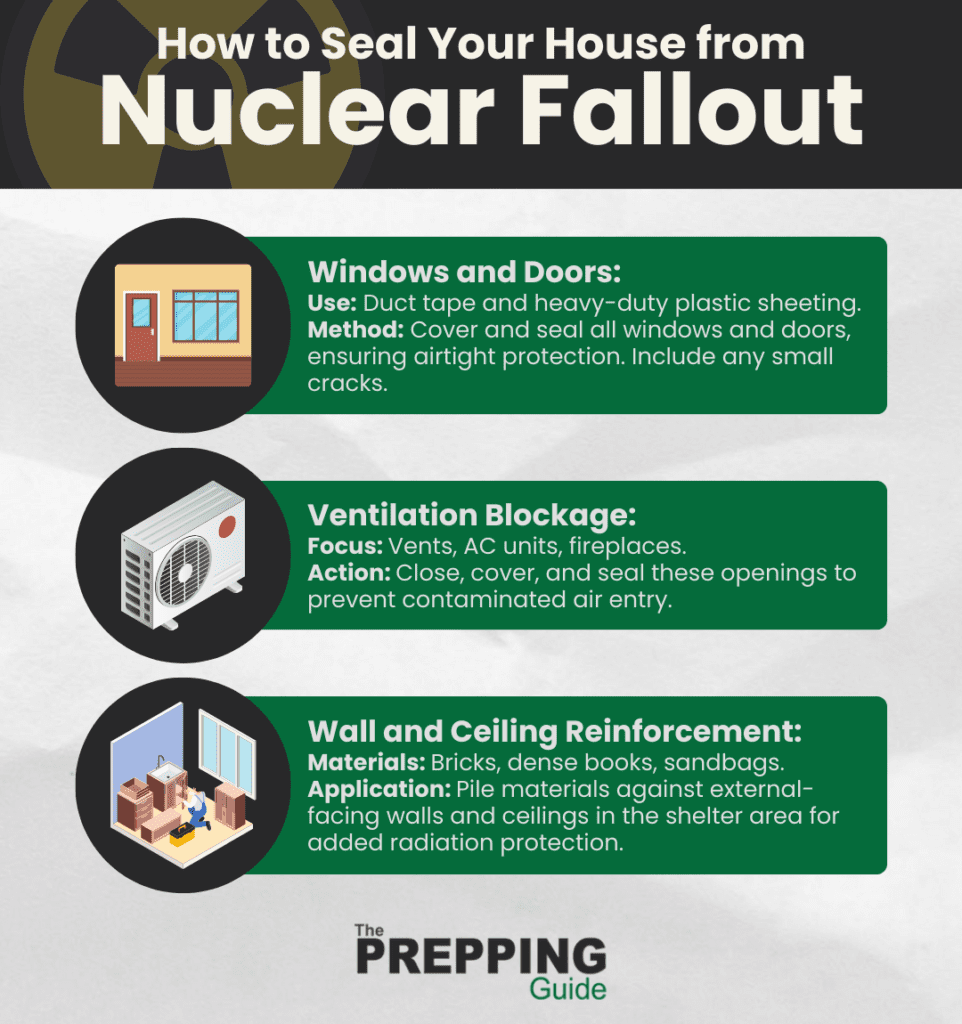
Tips for Sealing in an Efficient and Effective Manner
Efficiency and effectiveness are key when sealing your home. Here are some tips to ensure that your sealing efforts are successful:
- Start with the smallest openings: Seal any cracks or tiny openings first before moving to larger areas.
- Be thorough: Double-check all seals and make sure they are airtight.
- Regular maintenance: Periodically inspect the seals for any wear or leaks and reinforce them as needed.
These tips will help maintain the integrity of your seals over time, ensuring continued protection against fallout.
Here’s a video to help you understand the process better:
Ventilation and Air Filtration
With your home sealed against nuclear fallout, maintaining good indoor air quality becomes a crucial challenge. Sealing your home protects you from external contamination but also traps air inside. Let’s explore how to set up air filtration systems and the importance of a safe ventilation strategy to balance safety with breathable air.
The Importance of Maintaining Air Quality
In a sealed environment, the importance of maintaining good air quality cannot be overstated. Sealing your home protects against external contaminants, but it also restricts airflow, leading to potential air quality issues. Inadequate ventilation can result in the buildup of harmful gasses, such as carbon dioxide and other indoor pollutants, which can be detrimental to health over time. It’s crucial to strike a balance between keeping fallout particles out and ensuring that the air inside your sealed space remains breathable and safe.
This balance is a delicate one. On the one hand, you need to keep out harmful radioactive particles; on the other, you must avoid creating an environment that could be just as hazardous due to poor air quality. Regular monitoring of air quality within your sealed space is essential. This can be done using various indoor air quality monitors that measure levels of CO2, humidity, and other pollutants. By keeping a close eye on these factors, you can make informed decisions about when to implement your ventilation strategies, ensuring a healthy living environment even in the most challenging circumstances.
How to Set Up Air Filtration Systems
Setting up an effective air filtration system is a critical step in maintaining safe air quality in a sealed environment. Here are the steps:
1. Choose the right filtration system: The first step is to choose the right filtration system. Ensure it’s capable of filtering out radioactive particles, which are often much smaller than typical air pollutants. A system with a High-Efficiency Particulate Air (HEPA) filter is recommended, as it can trap particles as small as 0.3 microns, including many types of radioactive material.
2. Install in your shelter area: Once you have selected your filtration system, the next step is installation. Place the system in the area where you’re most likely to spend time during a fallout, such as your designated shelter area within your home. This ensures that you are breathing the cleanest air possible in your most frequented space.
3. Use HEPA filters: If you don’t have access to a commercial-grade filtration system, you can create a makeshift solution by attaching a HEPA filter to a box fan. While not as effective as commercial systems, this setup can still significantly improve the quality of air in your shelter area, filtering out a substantial amount of harmful particles.
Below is a handy guide you can use when setting up air filters at home for nuclear fallout:
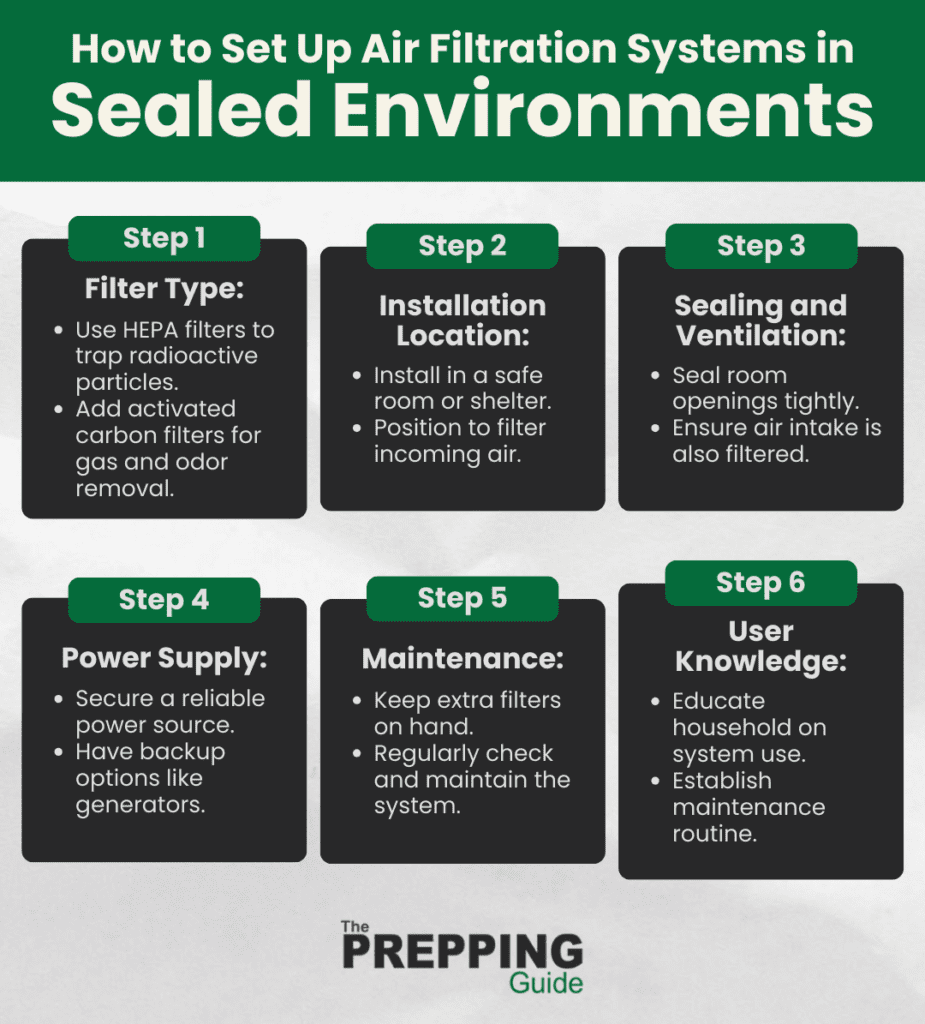
The Need for a Safe Ventilation Strategy
Developing a safe and effective ventilation strategy is an integral part of maintaining air quality in a sealed environment. One crucial aspect is periodic ventilation. This involves briefly opening a sealed window while wearing protective gear to allow the exchange of indoor and outdoor air. This action helps to reduce the buildup of pollutants and refreshes the air inside. However, it must be done cautiously to minimize the risk of bringing in contaminated air. Timing is key – choose times when the risk of fallout is lowest, based on available information and forecasts.
In addition to natural ventilation, consider using mechanical ventilation systems, if available. These systems can help circulate air without necessarily introducing outdoor air. For instance, heat recovery ventilators (HRVs) or energy recovery ventilators (ERVs) can exchange indoor and outdoor air without compromising the internal environment. These systems can be particularly effective if they are equipped with filters to clean incoming air. When using any mechanical system, ensure that it does not compromise the overall sealing of your space and is safe from bringing in contaminated air.
Communication and Information
In a nuclear event, the right information can be as crucial as your physical preparations. Staying informed and maintaining communication are not just about convenience; they’re about survival. It’s essential to understand how you can stay updated on the situation and keep in touch with the outside world and your loved ones.
The Importance of Staying Informed During a Nuclear Event
Being informed about the status of the fallout and public safety instructions is crucial. Reliable information is your lifeline, guiding your decisions about when it’s safe to unseal your shelter or evacuate. It’s not just about waiting out the event; it’s about understanding the evolving situation and reacting accordingly.
Staying updated with the latest news and instructions can significantly influence your survival plan. It helps you to adjust your strategies, such as rationing supplies or changing your location within your shelter. Remember, the situation outside can change rapidly, and staying informed ensures that you’re always a step ahead.
Communication Options and Emergency Channels
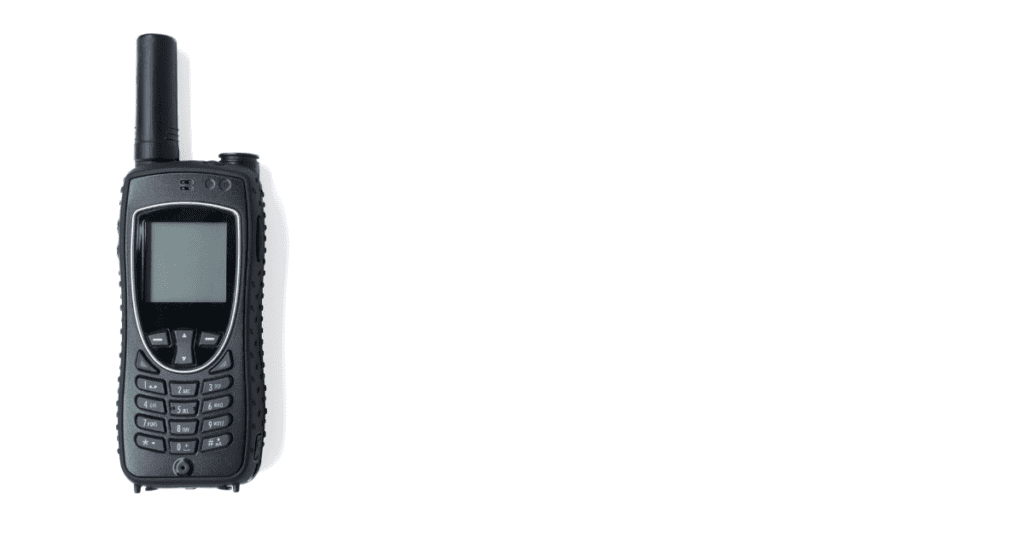
In the event of a nuclear fallout, traditional communication methods might be disrupted, particularly in a sealed environment. Here are some reliable options:
- Battery-powered or hand-crank radio: Essential for receiving emergency broadcasts and updates.
- Landline telephone: Can be more reliable than cellular networks, which might be overwhelmed or down.
- Satellite phone: If feasible, this can be a valuable tool for communication when other means fail.
Having multiple modes of communication can ensure that you stay connected even when some systems fail.
How to Maintain Contact with Loved Ones
It’s crucial to have a communication plan with your family and loved ones. If you find yourself separated, knowing how to reconnect can provide not just logistical benefits but also much-needed emotional support. Plan in advance how you will communicate, considering the possibility that usual means might not be available.
This might involve establishing a predetermined meeting point or designating an out-of-town contact to relay messages. In a situation where direct communication is not possible, having a previously agreed-upon plan can be incredibly reassuring. It’s about staying connected, even when physically apart.
Safety Protocols and Radiation Protection
In a nuclear fallout situation, your shelter becomes more than just a place to stay; it becomes your safe haven. It’s crucial to understand and follow safety protocols while inside, as well as how to protect yourself from radiation. Let’s dive into the essential safety measures and protection protocols you should have in place.
Safety Protocols Inside the Sealed Area
Inside your sealed shelter, following certain safety protocols is essential. Here are some key points:
- Minimize movement: To reduce kicking up settled dust, which might be contaminated.
- Use protective gear: Wear it when necessary, especially if you suspect the presence of radioactive material.
- Manage waste and hygiene: Properly dispose of waste and maintain hygiene to prevent health issues in a confined space.
Following these protocols can significantly reduce your risk of exposure to harmful elements and maintain a healthy living environment.
Information on Radiation Protection Measures
Protection from radiation is a critical aspect of your safety plan. The use of potassium iodide (KI) tablets can be crucial in protecting your thyroid from absorbing radioactive iodine. It’s a simple yet effective measure against one of the most common and harmful radioactive elements you might encounter.
Additionally, wearing protective clothing can shield your body from exposure. It’s also essential to understand how to safely dispose of contaminated materials to prevent further radiation exposure. Remember, the key is to minimize your contact with radioactive elements as much as possible.
The Significance of Monitoring Radiation Levels
If you have access to a Geiger counter or similar device, it’s invaluable for monitoring radiation levels. This tool provides real-time data on the radiation in and around your shelter, guiding your decisions about when it’s safe to venture outside. It’s not just about waiting out the event but actively monitoring the situation to make informed decisions.
Understanding radiation levels can also help you adjust your sheltering strategy. For example, if radiation levels in a certain part of your home are lower, you might decide to move there. Knowledge of radiation levels is a crucial component of your overall safety strategy.
Long-term Survival and Recovery
Surviving a nuclear fallout is not just about enduring the initial event; it’s about understanding and preparing for the aftermath. Long-term survival and recovery involve a range of factors, from knowing how long to stay sheltered to managing the transition back to normalcy. Let’s explore what this entails.
Duration of Sheltering in Place
The length of time you need to stay in your shelter can vary greatly depending on the severity of the fallout. In general, be prepared to stay sheltered for at least 24 hours, though it’s often much longer. Authorities will indicate when it’s safe to leave, but until then, it’s crucial to remain in your protected space.

During this time, rationing your supplies and maintaining your mental health are just as important as physical safety. Keeping a routine, staying active with light exercise, and engaging in activities can help manage stress and maintain a sense of normalcy in challenging times.
When to Unseal Your House
In the aftermath of a nuclear fallout, one of the most crucial decisions you will face is determining the right time to unseal your house. This decision is paramount for the safety and well-being of you and your loved ones.
Understanding Fallout Decay Rates
The concept of the half-life is central to understanding radioactive decay. The half-life is the period it takes for half of the radioactive atoms in a material to decay. Different radioactive isotopes present in nuclear fallout have different half-lives, ranging from mere seconds to several years. It’s this decay rate that primarily dictates how long the environment remains hazardous.
As time progresses, the intensity of radiation from fallout decreases. However, the rate of this decrease varies. Immediately after a nuclear blast, the radiation levels are extraordinarily high, but they reduce significantly in the subsequent hours and days. For instance, it’s estimated that fallout radiation levels can decrease to about 1% of their initial value within two weeks. This decrease is due to the decay of short-lived radioactive isotopes.
Understanding these decay rates is essential in assessing when it might be safe to unseal your house. However, it’s crucial to remember that this is a general guideline and the specific situation may vary based on the nature of the nuclear event.
Monitoring Radiation Levels
To make an informed decision about unsealing your house, monitoring the radiation levels both inside and outside your dwelling is essential. Tools such as Geiger counters, dosimeters, or other radiation detection devices can be instrumental in this process. These devices measure the levels of radiation and help determine if they have fallen to a safe threshold.
However, interpreting radiation measurements can be challenging. It’s important to understand the units of measurement (such as rems or sieverts) and what levels are considered safe. Typically, a level of 0.5 rems (5 millisieverts) per year is considered the maximum safe limit for human exposure, but for short-term exposure, higher levels may be tolerable.
In addition to personal monitoring, staying updated with official announcements and advisories is crucial. Government agencies and emergency services will provide critical information on radiation levels and safety advisories for your area.
Guidelines from Authorities
The guidance from local authorities and emergency services is paramount in your decision to unseal your house. In many cases, these authorities will have access to more comprehensive data about the radiation levels and the overall safety of the area.
Stay informed through all available channels – government websites, news broadcasts, and community alerts. Authorities will issue specific instructions on when it is safe for residents to unseal their homes and venture outside. This guidance often comes after extensive surveys and analysis of the affected areas to ensure that residents do not return to unsafe conditions.
Steps to Follow Once It’s Safe to Leave the Shelter
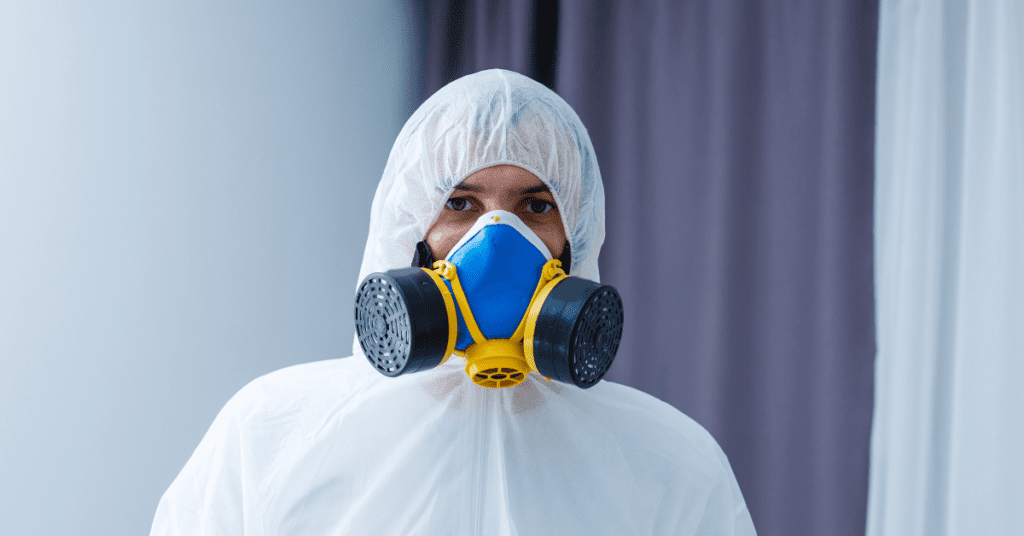
When authorities indicate it’s safe to leave your shelter, follow these steps for a safe transition:
- Wear protective gear: Ensure you are fully covered to avoid contact with any residual contamination.
- Avoid contact with outside surfaces: Be cautious about what you touch and where you step.
- Follow designated routes: Head to a safe area or follow established evacuation routes, as directed by authorities.
These steps are crucial in ensuring your continued safety as you transition from your shelter.
The Importance of Post-Fallout Clean-Up and Decontamination
After a nuclear event, decontamination is a critical part of recovery. It involves cleaning or discarding contaminated materials and personal decontamination processes. This step is vital in minimizing your continued exposure to any residual radioactive material.
Implement procedures for safely cleaning your shelter and yourself. This might involve washing with soap and water, disposing of contaminated clothing, and cleaning all surfaces thoroughly. The goal is to eliminate any traces of radioactive material that could pose a long-term health risk. Remember, the process of recovery and returning to normalcy starts with ensuring a clean and safe environment.
Conclusion
The process of sealing your house from nuclear fallout might seem daunting, but with the right tools, materials, and knowledge, it’s an achievable task. Regularly review and update your emergency plans and supplies to ensure they remain effective and relevant. Stay informed about potential risks and continue educating yourself on emergency preparedness. By taking these proactive steps, you fortify not just your home, but also your confidence in facing whatever challenges the future may hold.
